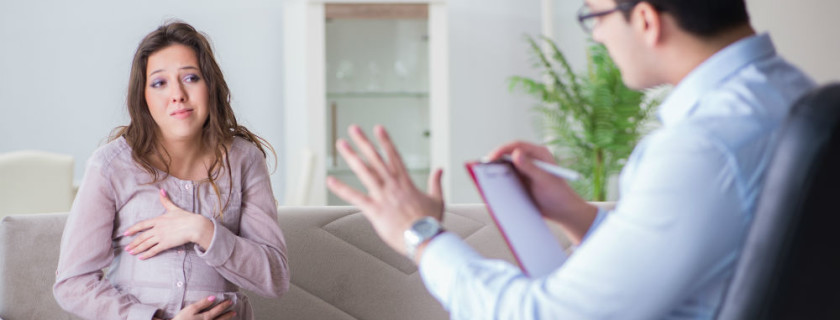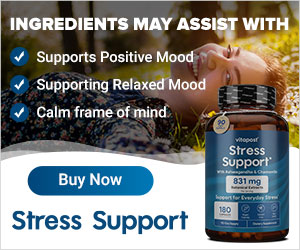Anxiety is our body’s reaction to apprehensive situation, with the aim to protect us from harm. As a critical part of our flight or fight response, anxiety is not necessarily something that has a finite cure or means of therapy as the response is integral to our well-being.
Anxiety only becomes a disorder when it begins to affect our regular lifestyle. The socio-psychological roots of anxiety give us a firm foundation to begin assessing triggers, treatments and actionable steps towards completely eliminating troublesome anxiety from our lives.
The involuntary outpouring of negative thoughts can be curbed by natural medicine, mindfulness, forceful changes to habits and lifestyle, and even adjustments of our diet can help. Here we’ll be taking you through a brief overview of how anxiety works, what spurs it, how you can help heal neurotic behavior and thought patterns, healing anxiety over both the short and long-term.
Reality at the root of anxiety
Throughout the United States alone, there are 40 million adults suffering from anxiety disorders. Despite anxiety being treatable in most cases, only 36.9% of those suffering actually receive treatment. Modern clinical research has addressed anxiety from numerous angles.
Given that anxiety arises on average from the age of eleven, the sheer variety of ways that anxiety manifests, creates a massive area of research and treatment. Most anxiety disorders come with a co-occurring disorder or physical sickness, making treatment and diagnosis even more complex. The most common disorders associated with anxiety are:
- Generalized anxiety disorder, affecting 6.8 million in the U.S.
- Panic disorder, affecting 6 million in the U.S.
- Social anxiety disorder, affecting 15 million in the U.S.
- Phobia-Based Anxiety, affecting 19 million in the U.S.
- Obsessive-compulsive disorder, affecting 2.2 million in the U.S.
- Post-traumatic stress disorder, affecting 7.7 million in the U.S.
- Major depressive disorder, affecting 16.1 million in the U.S.
- Persistent depressive disorder, affecting 3.3 million in the U.S.
How anxiety arises
When the body responds to an apprehensive thought, the feeling arises in the amygdala. This area of the brain carries impulses to the sympathetic nervous system, which governs intense emotional responses.
The sympathetic nervous system then addresses the “alert” by increasing your heart and breathing rate, changing the contraction of your muscles, as well as diverting the blood flow from your abdominal area to the brain.
This reaction is responsible for all of the forerunning symptoms accompanying anxiety. Depression arises along with anxiety in the vast majority of cases.
While certain people have a genetic predisposition towards anxiety, this does not guarantee that it will affect them. Traumatic experiences during the early stages of life cause an imbalance in the body’s fear-processing mechanisms, thus making one hyper-reactive to stress. Exaggerated expectations and worries are found to be underlying almost every case of social anxiety.
Long-term stress, persisting over an extended period of life can also create anxiety, as can living with a disease, a difficult partner, or residing in a tense home environment. As per the National Health Organization, one needs to develop a core understanding of emotional reactivity and underlying core beliefs, while developing coping strategies to implement over a period of time.
Causes of anxiety and anxiety triggers are two complete different things, despite being co-dependent.
Staying aware of anxiety triggers
Most anxiety is accompanied by a trigger symptom. When one stays mindful over the thought or thought process arising at the first feeling of a physical symptom of anxiety, the root of the problem can often be isolated. For example, most anxiety sufferers who experience panic attacks are forewarned by sensations of arrhythmia.
Staying aware of the forerunning trigger affords you the opportunity to carry out exercises set out by your treatment, while managing future anxiety through resolving apprehensive thoughts and diverting thoughts through behavioral changes.
Here are the most common physical sensations which indicate that an anxiety attack and compromised cognitive capacity due to tension, is about to manifest:
- Numbness and tingling of the limbs, joints and extremities
- Inability to find rest and trouble sleeping
- Sharp changes in body temperature
- Headaches, particularly migraines
- Pulsations or tinnitus in the ear
- Gastrointestinal disease
- Sudden onset of fatigue
- Paranoia and extreme fear
- Tension in the neck
- Heart palpitations
- Allergic reactions
- Chest pain
- Twitching
Invisible anxiety triggers
With anxiety being deeply set in emotional responses arising from apprehensive thoughts, there are many “invisible” triggers which one should always bring into conscious awareness in order to understand and overcome. In many cases, too much time alone can allow you to fall into a repetitive thought pattern which is hard to stop.
Like attracts like. Associated thoughts thus veer towards more stressful contemplations which worsens when allowed free focus and no third-party input to change the way you are thinking, or what you are thinking about.
Without setting yourself actionable, attainable goals, your emotional reasoning can become biased. If each day simply passes with nothing clearly achieved, your mind begins to mull on the distant future.
With the only comparisons being bland and disinteresting due to no finite emotional reward in each memory, the vision becomes dismal.
The environment, including the media, friends and family, can also steer you toward apprehensive thoughts, therefore surrounding yourself with positive associations and staying clear of the news can often remedy anxious concerns.
Recurring thought patterns and habitual anxiety
As an emotional disorder, in view of Stanford research, anxiety has recently been reclassified into five specific categories, as defined by their symptoms:
- Tension: Irritability, over-sensitiveness, persistent unfavorable mood, Temper, easily overwhelmed
- Anxious arousal: Impaired cognitive function (forgetfulness, focus), elevated heart rate, sweating
- General anxiety: Physical feelings of stress, similar symptoms to anxious arousal, including persistent worry
- Anhedonia, or the inability to experience pleasure: Unable to function while in distress, loss of emotional perception (ability to cope with no emotional wavering or finite mood)
- Melancholia: Restricted social functioning, distress which causes reclusion in social situations
Each category causes different areas of the brain to activate. Medical researchers aim to refine the diagnostic process in order to better prescribe treatment options.
Modern medicine’s role in the treatment of anxiety
There are many successful therapies used to treat anxiety disorders. Cognitive-behavioral therapy allows sufferers to determine and avoid thoughts which arise in anxiety, while behavior changes are advised to help them learn to react to unfavorable situations.
Psychodynamic psychotherapy is a means to discern which deep-seated traumatic experience is at the root of any given uprising of anxiety, while focused conversation is used by clinician-researchers to explore the issue and resolve it.
Many medications have also proven effective over long-term treatment schedules. Most are helpful when used alongside psychotherapy, although some are known to carry unpleasant side effects and interactions.
Anti-anxiety drugs such as benzodiazepines have been favored over the years, although long-term use results in a tolerance and they have recently come under criticism for their trend of developing dependence. Clonazepam, Alprazolam, and Buspirone are the most commonly prescribed anxiety drugs.
Antidepressants are widely used, in particular selective serotonin reuptake inhibitors. The risk of dependency is lower, while they treat depression at the same time. Panic disorders are often treatable with antidepressants such as Sertraline.
Acute anxiety is effectively treated through the use of beta blockers which cause a slow-down of your heart rate, while reducing blood pressure levels as well.
Natural therapies, meditation and mindfulness
Relieving invisible anxiety triggers is often the simplest way to “cure” anxiety. You can implement a strategy to avoid an individual fear, such as attending to possible health concerns by means of natural treatments and exercise, or you can attempt desensitizing yourself to a trigger itself. If you feel the rise of anxiety upon a specific thought or action, then purposefully evoke that fear.
Taking control over fear while not fearful causes the mind to adapt, reasoning clearly without the distress. Regardless of what you choose to do when anxiety hits, the anxiety needs to be acknowledged. You will find that by simple staying mindful of the trigger and recognizing its presence, it will wane.
Despite many herbal remedies being highly beneficial to anxiety and depression, there are two which are backed by sound scientific evidence. St. John’s Wort, or Hypericum perforatum, is one of the most beneficial for mild anxiety disorders.
The presence of hypercin and hyperforin has an anti-depressive effect due to causing the inhibition of serotonin reuptake and monoamine oxidase.
Kava, or Piper methysticum, is the second proven remedy. The anxiolytic effects are nothing short of outstanding, however kava is associated with hepatotoxicity in some cases. Careful self-evaluation must be given before use and during use.
Therapies which allow your mind to reach a state of calm, assisting focused thought without extreme emotional responses causing interference, are highly beneficial to those suffering from debilitating anxiety. Meditation, creative expressions such as art and writing, physical therapies such as Yoga and Qi-Gong, and general mindfulness are all highly beneficial to controlling the impulses of your sympathetic nervous system.
Many practices will help to bring anxiety under control. Explore your options and start to practice an exercise that is good for both your mind and body.
Long-term resolutions for anxiety sufferers
For many, resolving extreme anxiety requires little more than a regular, rigorous exercise regime, yet others require a creative outlet. When opting for exercise, try to hit a heart rate which is 80% of your maximum.
This grants the greatest benefit when sustained for 15 to 20 minutes, depending on the intensity and intervals of your training.
Without a doubt, the best “cure” for anxiety is processing and understanding the thoughts which give rise to tension. New studies show that depression and anxiety go hand-in-hand, with both social stress reactions causing physiological changes in the grey-matter of your brain. This suggests that similar brain mechanisms are involved in the two emotional disorders.
You need to address the symptoms of depression while understanding the triggers for social anxiety, in order to heal. One needs to realistic determine whether or not any chronic anxiety suffered is manageable alone.
Certain people respond better to self-supportive therapy, while others have better results from clinical solutions, such treatment by psychologists and psychiatrists.
Regardless of which is best for you, it is imperative to resolve anxiety rather than live with it, as the latter only gets worse. Not all anxiety resolution needs drugs, however if your specific condition needs medication, don’t hold back from allowing yourself treatment.






